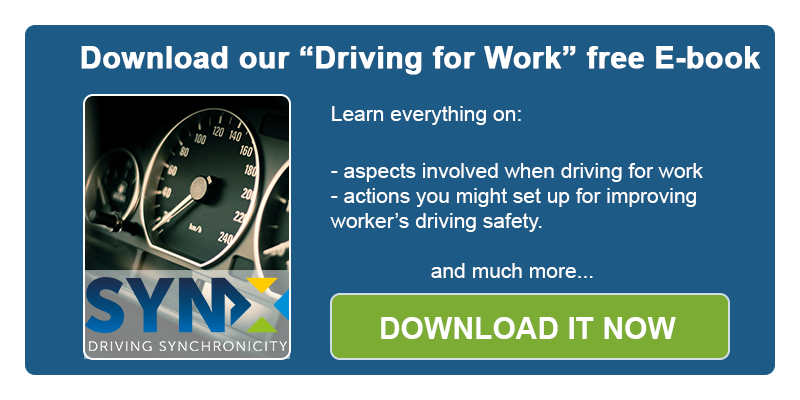
According to the HSA (Health and Safety Authority) of Ireland, approximately 14,000 road traffic accidents between 2008 and 2011 involved driving for work. Out of these accidents, 4,672 involved commercial vehicles such as vans, trucks or buses and 9,427 involving private cars, which were either totally, or partially, work-related.
In the EU, approximately 800 lorry drivers are killed every year in road traffic accidents, highlighting the dangers of this occupation.
If you consider these sobering figures for a moment, driving safety has to be a top priority for employers and employees who drive for work.
What does driving for work mean?
Driving for work is the activity of people who drive on the public highway in the course of their job, either in a vehicle provided by their employer, or in their own vehicle—receiving an allowance or payment from their employer for any distances driven. The employer, therefore, has a duty to reasonably ensure the safety of their employees whilst using a vehicle in the act of work. Employers should have appropriate policies and procedures in place to maximise safety when employees drive a work-provided vehicle or drive their own vehicle for work.
Remember driving for work is a risky activity, not only for drivers, but also for fellow workers, pedestrians and other road users. As an employer or self-employed person, you must, by law, manage the risks that may arise when you or your employees drive for work.
Collisions and accidents, apart from the risks to drivers’, and other road users’, lives, can also impact on company costs and negatively affect the image of your enterprise. It is necessary that companies adopt a road safety policy to minimise danger and reduce operating costs. Successful companies make a concerted effort to incorporate road safety into their quality policy, as a matter of course.
If you want to establish a sound code of conduct for your employees in order to reduce risks and make their work safer and more efficient, there are certain steps you should definitely consider:
- Draft a written safety policy, with clear, uncomplicated, instructions for your drivers and for the people you hire. Make sure they are read and fully understood.
- Make sure that your fleet are only comprised of vehicles equipped with the best safety features and consider using road safety devices such as dash cams and driver assist technology.
- Create precise procedures to guarantee proper maintenance of your vehicles and ensure they are carried out.
- When managing your drivers’ work schedules, see that they have enough time to observe speed limits and, as far as possible, avoid peak-hour driving; factor in rest periods for drivers who are required to load and drive.
- Ensure drivers are trained in safe driving practices, plan refresher training on a regular basis; always check their fitness to drive and their background before hiring.
- Establish a zero-tolerance policy regarding the use of alcohol and drugs; ensure that mobile phones are used appropriately and are hands-free whilst driving.


